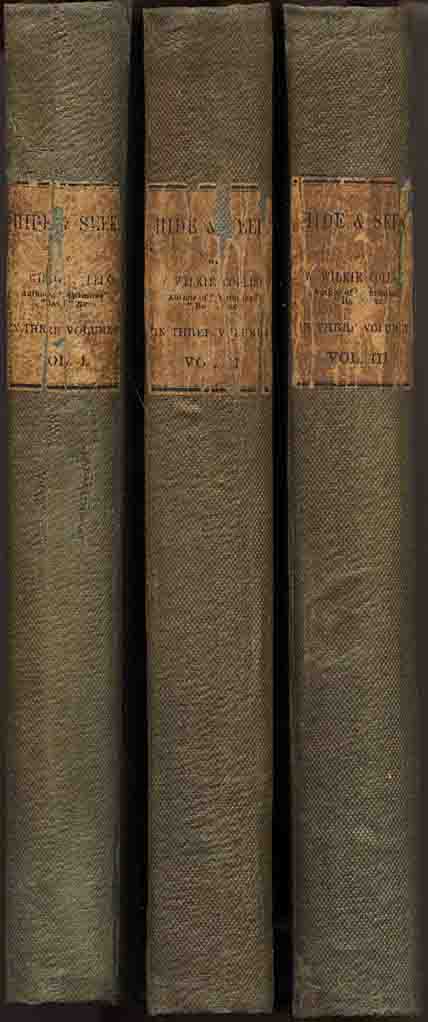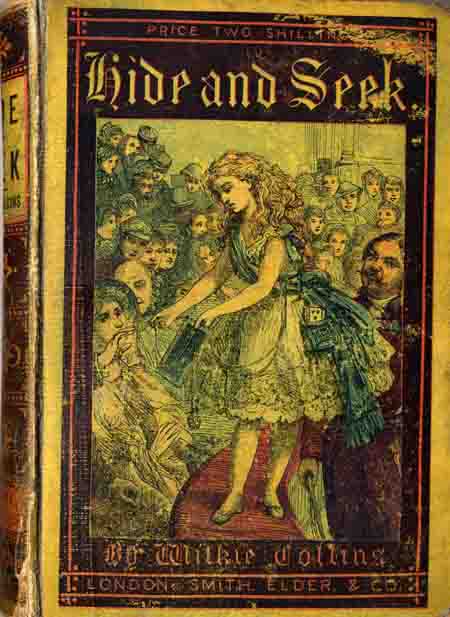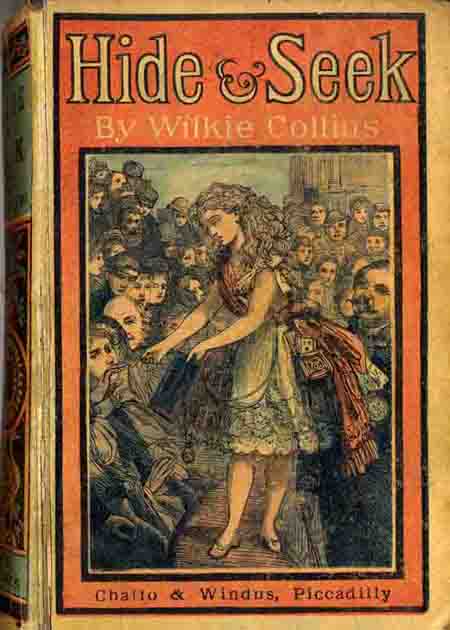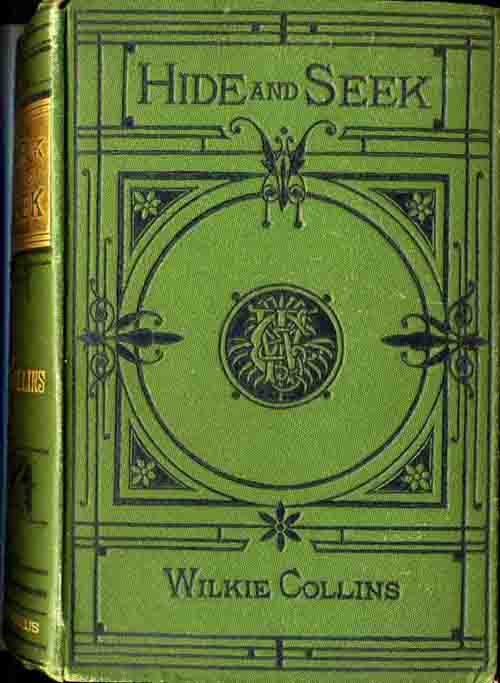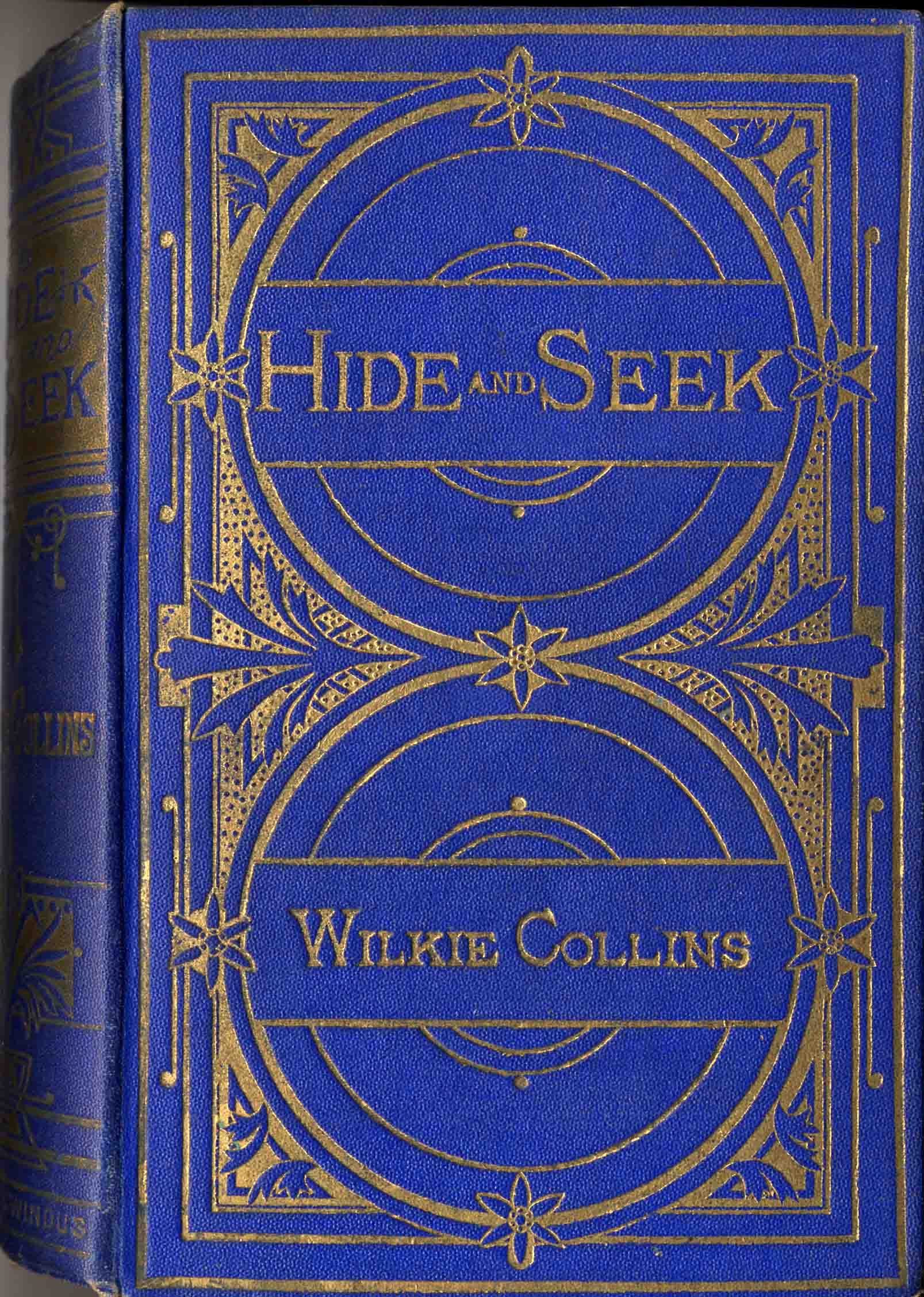HIDE
AND SEEK: OR THE MYSTERY OF MARY GRICE
'He felt...that he should mope and pine, like a wild animal in a cage, under confinement in an office'.
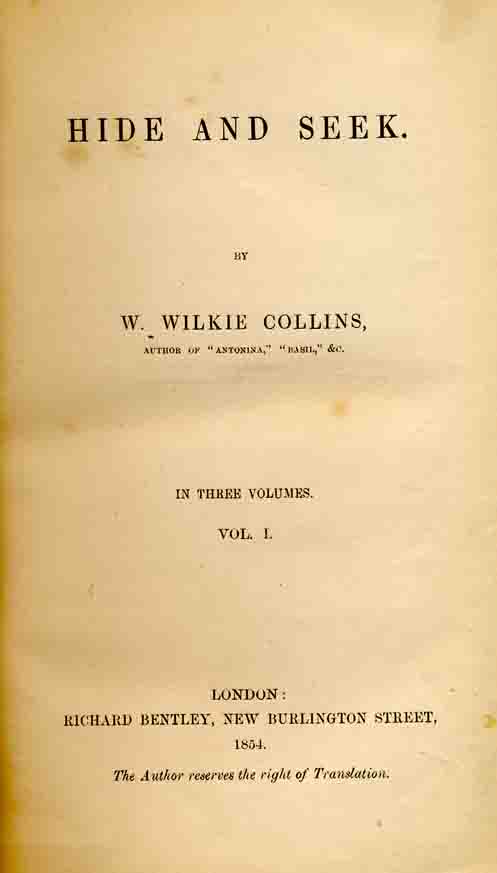 |
|
|
First edition title-page in 1854 |
Three volume first edition in boards |
Collins's third novel, published in 1854; dedicated to Charles
Dickens 'As a token of admiration and affection'.
Dickens wrote to Georgina Hogarth: 'I think it far away the cleverest
novel I have ever seen written by a new hand.'
Reviews were enthusiastic but despite praise from the Athenaeum
and The Leader sales were disappointing; Collins believed this was due
to the effect of the Crimean War on the book-reading public.
Collins was already careful to carry out background research;
the experiences of the deaf-mute Madonna are closely modelled on
examples in Dr John Kitto's 1845 The Lost Senses.
The character of Mat Marksman was probably influenced by the novels of
Fenimore Cooper.
|
|
|
| 1871 Smith, Elder Yellowback | 1881 Chatto & Windus Yellowback |
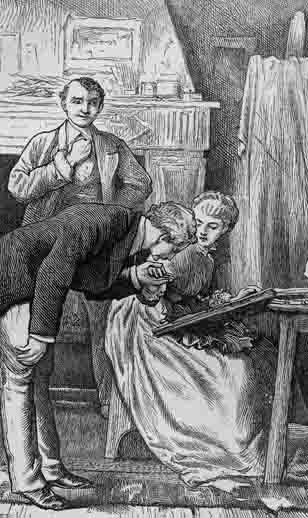
From the 1875 Chatto & Windus Piccadilly Novels
Zachary Thorpe (Zack), closely attached to his gentle mother but at odds
with his over-bearing, religious father, is a frequent visitor to the Blyths
despite Mr Thorpe's disapproval of Madonna's dubious origins.
Madonna falls in love with him, but Zack is too immature to respond.
He is a wild twenty-year-old who secretly frequents late night theatres
and drinking places against his father's wishes.
One night he is involved in a brawl and is rescued by Mat Marksman, an
outlandish, nomadic character who was scalped by Indians.
Zack arrives home drunk and the following day leaves his father's house
to share lodgings with his new found friend.
Mat, recognising that the distinctive brown hair in the bracelet is
identical with Zack's, deduces that Zack's father was in reality
'Arthur Carr' and confronts him. Thorpe
confesses in a letter to Blyth, while the magnanimous Mat destroys a similar
note to Zack and takes him travelling in America.
When news comes that Zack's father has died, Mat reveals the whole
secret, including the fact that Zack and Madonna are brother and sister.
Zack returns home and eventually persuades Mat to leave his solitary
life to rejoin his niece and friends in England.
|
|
|
| 1875 Chatto & Windus binding for the Piccadilly Novels collected edition | 1876 variant or possible trial binding, also from Chatto & Windus |
Serialisation
None
Book publication
First edition
3 volumes, Richard Bentley, London 1854.
Pale maroon cloth, covers blocked in blind, spines lettered in gilt, pale
yellow end-papers. Half-title in
each volume. Published 6 June 1854.
Variant bindings issued simultaneously in dark brown cloth; and paper
boards, half cloth, with white end-papers.
Vol I
viii + 300 pp. Publishers'
advertisements dated June 1854 occupy pp
(299-300)
Vol II
(iv) + 324 pp. Publishers' advertisements
dated June 1854 occupy pp (323-324)
Vol III (iv) + 332 pp
1 Volume editions
Sampson Low (sub-titled The Mystery of Mary Grice, with revised
text and a frontispiece by John Gilbert) 1861-1863; Smith, Elder 1865-1872;
Chatto & Windus (with 8 illustrations by M. F. Mahoney) 1875-1921.
Dover, New York 1981; Sutton, Stroud, 19
, World's Classics 1993 (Critical edition, edited
by Catherine Peters).
1st US edition
Dick & Fitzgerald, New York 1858.
Translations
Russian, St Petersburg 1858; German, Sondershausen 1864; French, Paris 1877.
[Top
of Page] [Back to Main Works
